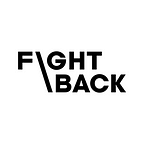A guide to assumption mapping in healthcare with evidence-based medicine
If you’re sure you need it, build it. If you have doubts, test it first
For Innovators, the core challenge is not to come up with novel ideas or problems to solve. They’re abundant. The struggle is to find out what the most important next step is in advancing innovation. Startups die of indigestion rather than starvation, so having a clear focus is critical. A dependable way of setting the right priorities is by mapping your riskiest assumptions and gaining clarity on how much certainty you have about them already. It says: find out what assumption is most important for the success of your innovation. If you’re sure you need it, build it. If you have doubts, test it first, e.g. with prototypes.
Over the past two years, Sven Jungmann relied heavily on David J Bland fantastic Assumptions Mapping Framework. However, since he works mostly in healthcare, he kept running into one core problem that appears when you move into spaces where you expose people to risks that they might not even notice.
The problem lies in the limitations of the three traditional lenses of Design Thinking. A solution can be perfectly desirable to customers, it can be feasible, and be economically viable to sell — but it might cause harm (think of vapes) or claim to improve your health but have no effect at all (like snake oil). An article he wrote about this together with Anja Mayr will be published soon. To make a long story short, we need a fourth lens if people’s health is affected: we call it effectiveness, i.e. evidence of a solution’s positive effects and safety.
So, Anja and Sven set out to develop a new canvas that includes this Fourth Lens. They added questions that prompt innovators to think more about the complex market access challenges that are typical for health and care solutions. Here it is:
This is the Health Innovation Canvas in its Beta-Version. Sven can send you a high-quality PDF of the canvas for printing in A1 if you like. It’s licensed under Creative Commons, so it’s free to use!
How to use it
Use it alone or for ideation sessions in teams.
- Print it out or use it digitally
- Write only one clear statement per sticky note (no bullet points)
- Then put it on the 2x2 diagram, cluster your thoughts
- Discuss why it is as (un)-important and well or poorly understood as you think it is
- Create a prioritised backlog
What to do with your assumptions once you mapped them on the 2x2
- Begin planning the implementation of solutions that cater to the important and known assumptions (you still need to keep testing them once you implemented them)
- By known / unknown we mean how well they are known to you? For example, if you think that patients want a chatbot rather than a call centre: what makes you sure about that? Have you conducted research? Have you found evidence for that through your desk research?
- Begin planning the evaluation of the important but unknown assumptions. They can if proven false, quickly kill your venture
- What falls in the bottom right quadrant is worth further problem space research, including interviews, ethnographic research, and contextual inquiry
- Anything that is in the bottom left quadrant is irrelevant for you, don’t waste your time on it
You can also use it as a checklist before pitching to stakeholders.
Originally published on https://medium.com on July 23, 2019.
